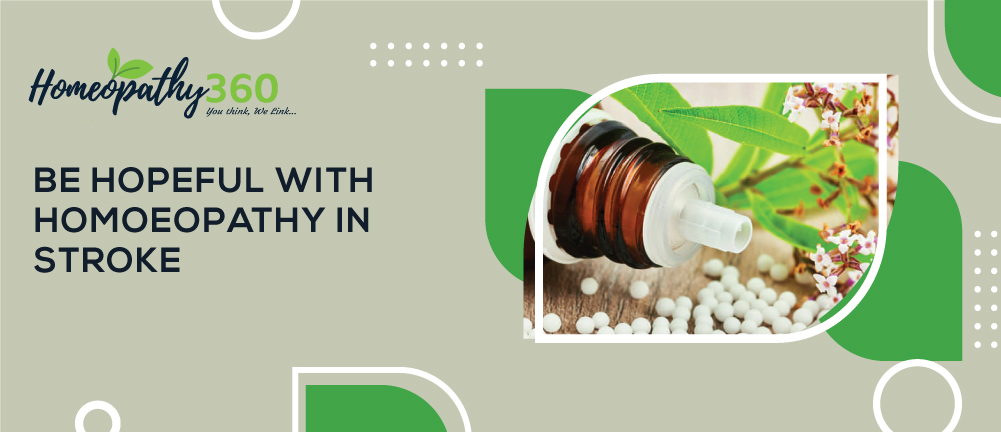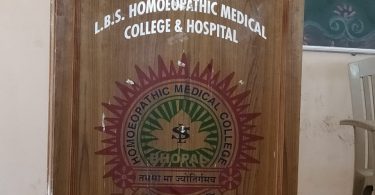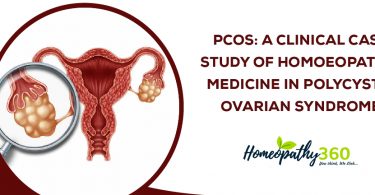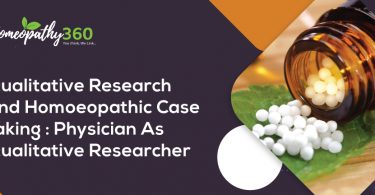
ABSTRACT: A stroke is a serious medical condition in which poor blood flow to the brain results in cell death. The blood supply to the brain can be interrupted by either occlusion of the arteries supplying the brain or a rapidly growing tumour or a subdural haematoma. Thus, it can be ischaemic or haemorrhagic. The symptoms and signs are usually sudden and therefore requires immediate and careful medical intervention. However, homoeopathy can also play a trustworthy role in managing these cases when given according to the symptom similarity and proper study from the source books.
KEYWORDS: Stroke, types, signs and symptoms, homoeopathic management.
ABBREVIATIONS: transient ischemic attack (TIA), before christ (BC), AVM (arteriovenous malformation), face, arms, speech, time (FAST), central nervous system (CNS), computed tomography (CT).
INTRODUCTION: A stroke, also known as a cerebrovascular accident, is a sudden disabling attack or loss of consciousness caused by an interruption in the flow of blood to the brain. Thus, the part of the body that the blood-deprived brain cells control stops working. In this, a focal neurological deficit may take a few hours or days to worsen.1, 2 This may occur usually due to gradual occlusion of major blood vessels by a thrombus or may also occur in a rapidly growing tumour or a haemorrhage into the brain.1, 2 It is a medical emergency because stroke may lead to death or permanent disability.
This term have many synonyms used around the globe. Initially, the phenomenon of sudden paralysis often associated with ischaemia was first described by Hippocrates (460 to 370 BC). Also, apoplexy, a greek word meaning “struck down with violence”, first appeared in Hippocrates’ writings to describe this phenomenon. The word ‘stroke’, used as a synonym for apoplectic seizure as early as 1599 , is a literal translation of the greek term ‘Apoplexy’.3 Stroke is classified by the mechanism which causes the loss of the blood supply, and can be either ischaemic or haemorrhagic.2, 3
It can be caused either by an artery in the brain being obstructed or blocked, preventing oxygen-rich blood from being delivered to brain cells (called an ischaemic stroke), or by a blood vessel rupturing, thus preventing adequate blood flow to the brain (called a haemorrhagic stroke).3
A transient ischaemic attack (TIA), or “mini stroke”, is caused by a temporary clot, thus is short-lived where the clinical symptoms resolve spontaneously or last a few seconds to minutes. It is a brief episode of neurological dysfunction and an important warning of an impending stroke. Thus, it also requires emergency assessment to try to minimise the risk of a permanent brain ischaemia. A stroke is classified as a TIA if all symptoms resolved within 24 hours. 1, 2, 3
There is also lacunar stroke which results from the blockage of a single tiny branch of artery penetrating the brain. The area of the involved brain is small but can still cause significant neurologic deficits, just like a stroke involving a larger blood vessel and more brain tissue.1, 2, 3
CAUSES: In an ischaemic stroke, the artery can be blocked in a couple of ways, i.e. an artery can narrow over time if cholesterol builds up, called plaque, and a clot is formed at the site if that plaque ruptures which prevents the blood from passing to brain cells downstream, thus they are then deprived of oxygen. This is thrombotic stroke. When the artery is blocked because of a clot, a piece of fatty material or other object (embolus), that travels within the bloodstream and lodges in a blood vessel, results in embolic stroke. Blood clots that embolise usually arise from the heart, most commonly heart arrhythmia, called atrial fibrillation.1, 3 Since blockage of the artery is gradual, onset of symptomatic thrombotic stroke is slower than that of a haemorrhagic stroke.1,2
Haemorrhagic stroke, results from the rupture of a blood vessel or an abnormal vascular structure (aneurysm), which leads to spilling of blood into brain tissue, thus brain cells stop working due to disruption of blood supply to that area. There are two main types of haemorrhage resulting in this type of stroke:
(1) Intracerebral haemorrhage, which is basically bleeding within the brain itself (when an artery in the brain bursts, flooding the surrounding tissue with blood), due to either intraparenchymal haemorrhage (within the brain tissue) or intraventricular haemorrhage (within the ventricular system of brain).1, 2, 3
(2) Subarachnoid haemorrhage, which is bleeding that occurs outside of the brain tissue but still within the skull, and precisely between the arachnoid mater and pia mater (the delicate innermost layer of the three layers of the meninges). 1, 2, 3
The cause of bleeding or haemorrhage is often due to poorly controlled high blood pressure that results in weakened arterial walls. Blood may also leak from an aneurysm, a congenital weakness or ballooning of an artery wall, or from an AVM (arteriovenous malformation), a congenital abnormality where an artery and vein connect incorrectly. The bleeding can also form a haematoma that damages brain cells directly and may result in swelling that further puts pressure on surrounding brain tissue.2, 3
About 87% of strokes are ischaemic, the rest being haemorrhagic. Bleeding can also develop inside areas of ischaemia, known as “haemorrhagic transformation.”3
RISK FACTORS 1, 3: The most common high risk factors include:
- High blood pressure
- Heart conditions like atrial fibrillation, patent foramen ovale (hole in the heart), and valvular heart disease
- Cocaine users
- High cholesterol
- Smoking
- Diabetes mellitus
- Increasing age (persons above 65 years of age)
Additional risk factors in younger individuals (less than 50 years old), include illicit drugs, such as cocaine or amphetamines, ruptured aneurysms, and inherited predispositions to abnormal blood clotting.1, 3
Signs and symptoms: There is a mnemonic to remember the warning signs of stroke, i.e. FAST , as advocated by the American Stroke Association.3
- Face – dropping of the face on one side, the person may not be able to smile, or open their mouth or the eye may drop.
- Arms – person may not be able to lift both arms and keep them there because of weakness or numbness in one arm. Loss of muscle tone and spasticity
- Speech – slurred or garbled speech, or the person may not be able to talk at all despite appearing to be awake; may also have problems in understanding what is said to them.
- Time – it’s time to dial 999 immediately if one sees any of these signs or symptoms.
The stroke symptoms typically have sudden start, over seconds to minutes and in most cases do not progress further. Symptoms of stroke depend upon what area of the brain has stopped working due to loss of its blood supply. The more extensive area of the brain affected, the more functions that are likely to be lost. In most cases, only one side of the body shows symptoms (unilateral). Depending on the part of the brain affected, the effect is usually on the opposite side of the body.1, 3
In addition to the CNS pathways, the brainstem gives rise to most of the twelve cranial nerves. The stroke affecting the brainstem and the brain, therefore, can produce symptoms relating to deficits in these cranial nerves.1, 2, 3
Some forms of stroke can cause additional symptoms like most forms of stroke are not associated with headache, apart from subarachnoid haemorrhage, cerebral venous thrombosis and intracerebral haemorrhage occasionally.2, 3
The patient may present with multiple symptoms includes the following:
- Acute change in level of consciousness or confusion of mind
- Acute onset of weakness or paralysis of half or part of the body
- Numbness of one half or part of the body
- Partial loss of vision
- Diplopia.
- Difficult speech or in understanding speech
- Difficulty in balancing and vertigo (ataxia)
Symptoms like loss of consciousness, headache, and vomiting occur more often in haemorrhagic stroke than in thrombosis because of the increased intracranial pressure from the leakage of blood which compress the brain.1, 2, 3
MANAGEMENT OF STROKE 1, 3:
- The initial evaluation requires physical examination, i.e. assessing vital signs and patient wakefulness.
- Taking note of the cardiovascular status, i.e. blood pressure and electrocardiogram, cardiac function.
- Neurological examination for the degree of neurological deficit and vascular territory involved.
- Metabolic status assessment (blood sugar, hypoxia, renal functions, electrolyte status).
- Haemoglobin and coagulation parameters.
In an acute stroke, blood tests and CT of the head are indicated to plan the treatment. 1, 2, 3
HOMOEOPATHIC MEDICINES FOR STROKE4, 5:
Aconitum napellus: Aconite is considered in the initial stage. The person feel restlessness and tossing about. There is great anxiety of mind and body. Face becomes red. Congestive headaches. Hot heavy and bursting sensation in the head. The pulse is fast, full, hard, tense and bounding. Palpitation with anxiety. Hot hands and cold feet. Numbness and tingling in hands and feet, especially left arm. Dry, burning mouth with numbness and tingling . Vertigo, worse on rising.
Arnica montana: Loss of consciousness, involuntary evacuation from bowels and bladder; in acute attack, controls haemorrhage and aids absorption.
Baryta carbonica: Tendency of stroke in old people; headache. Blood vessels soften and degenerate, become distended, and aneurysms, ruptures, and stroke result.
Belladonna: Severe headache with congestion in the head, face hot and flushed. Eyes are wide and staring. Throbbing headache, especially in temples, which is worse from motion, light, noise and lying down, better from laying the hand on head and bending head backwards. Eyes are dilated. Pulse full and rapid.
Cactus grandiflorus: Congestive headache, periodical, threatening stroke. Sanguineous congestion in persons of plethoric habit; often resulting in haemorrhage.
Calcarea fluorica: Arteriosclerosis; threatened stroke. Haemorrhagic tumors on head.
Crotalus horridus: Paralysis from stroke, especially right side. Lower limbs go to sleep easily. Hands tremble, swollen. Cannot keep legs still. The patient is loquacious with desire to escape. Muttering , mumbles, jumbles, and stumbles over his words, tremens. They are agitated, irritable and cross.
Glonoinum: Confusion, with dizziness. Head heavy, but cannot lay it on pillow. Cannot bear any heat about head. Better from uncovering head. Throbbing headache. Vertigo on assuming upright position. Cerebral congestion. Head feels enormously large, as if skull were too small for brain. Shocks in head, synchronous with pulse. Threatened stroke.
Kalium bromatum: Stroke attacks, uraemic or otherwise; somnolence and stertor, convulsions, aphasia.
Lachesis mutus: Rush of blood to head; after alcohol; mental emotions; suppressed or irregular menses; at climaxis; left-sided apoplexy with pressing or bursting pain in head.
Laurocerasus: Stroke occur suddenly with palpitation, cold moist skin and convulsions of the facial muscles, suffocation and loss of speech.
Opium: Complete loss of consciousness. Delirious talking, with wide open eyes. Vertigo, dull, heaviness of head. Complete insensibility.
Veratrum viride: Congestive headache; intense, almost apoplectic, with violent nausea and vomiting. Congestive apoplexy, hot head, bloodshot eyes, thick speech, slow full pulse, hard as iron.
CONCLUSION: Stroke is a result of reduced or interrupted blood supply to brain due to any cause.
The symptoms of stroke may depend upon the area of brain affected and hampers the function. Early action can minimise the brain damage and further complications. Homoeopathy is an effective tool that can be integrated for treatment depending upon the intensity of the ailment. It is curative, with no side effects and helps restoring balance.
REFERENCES:
- Mathew, K. and Aggarwal, P., 2008. Medicine. 3rd ed. New Delhi: Elsevier, pp.242-249
- Walker Brian L., Colledge Nicki R., Penman Ian D., et al. Davidson’s Practice and Principles of Medicine. #22nd edition. China: Elsevier; 2014
- Wedro, B., 2020. Stroke. [online] Available at: <https://www.medicinenet.com/stroke_symptoms_and_treatment/article.htm> [Accessed April 2020]
- Boericke W. Boericke’s New Manual of Homoeopathic MateriaMedica with Repertory. Third revised and augmented edition based on 9th edition. Noida, India: B. Jain Publishers (P) Ltd; 2018
- Murphy Robin. Lotus Materia Medica. #3rd edition. Noida, India: B. Jain Publishers(P) Ltd; 2006
About the authors:
1. Dr Nanritam Chopra, MD (PGR), Dept. of Materia Medica, Dr.M.P.K.Homoeopathic Medical College, Hospital & Research Centre, Jaipur (A constituent unit of Homoeopathy University, Jaipur, Raj.)
2. Dr Nandini Dadhich, MD (PGR), Dept. of Materia Medica, Dr.M.P.K.Homoeopathic Medical College, Hospital & Research Centre, Jaipur (A constituent unit of Homoeopathy University, Jaipur, Raj.)





